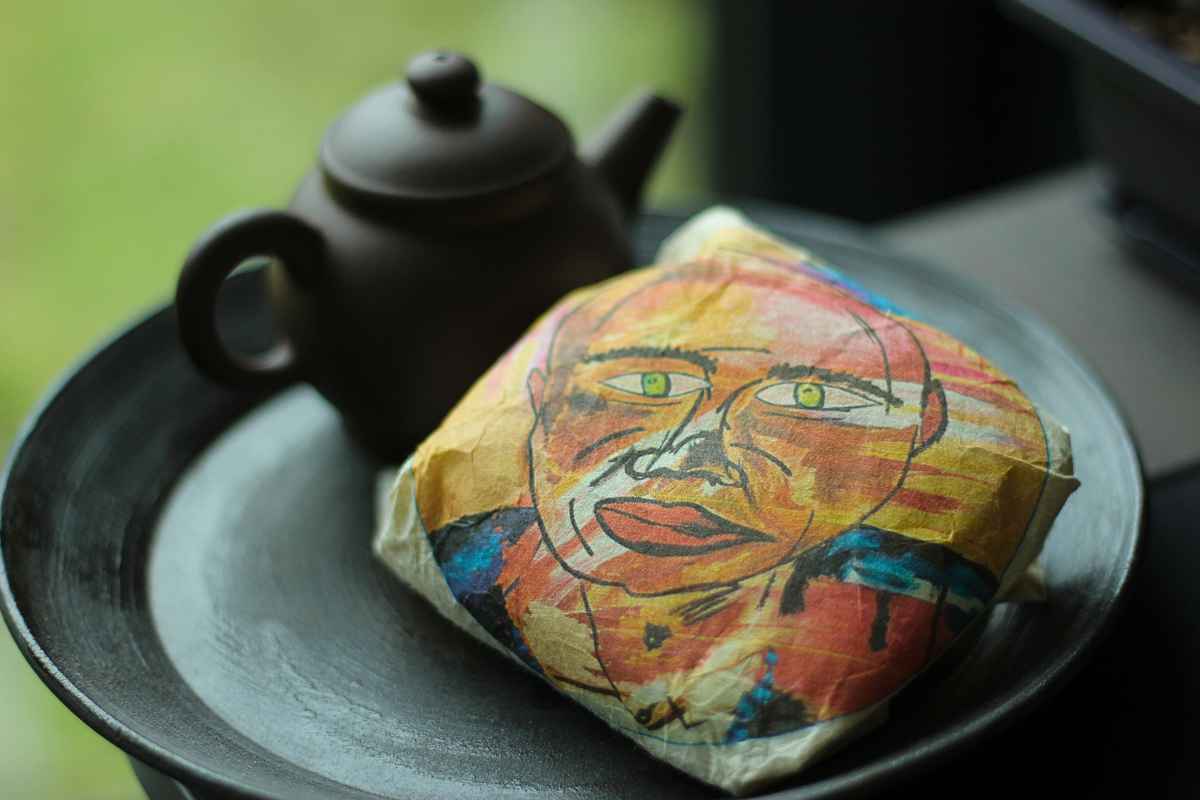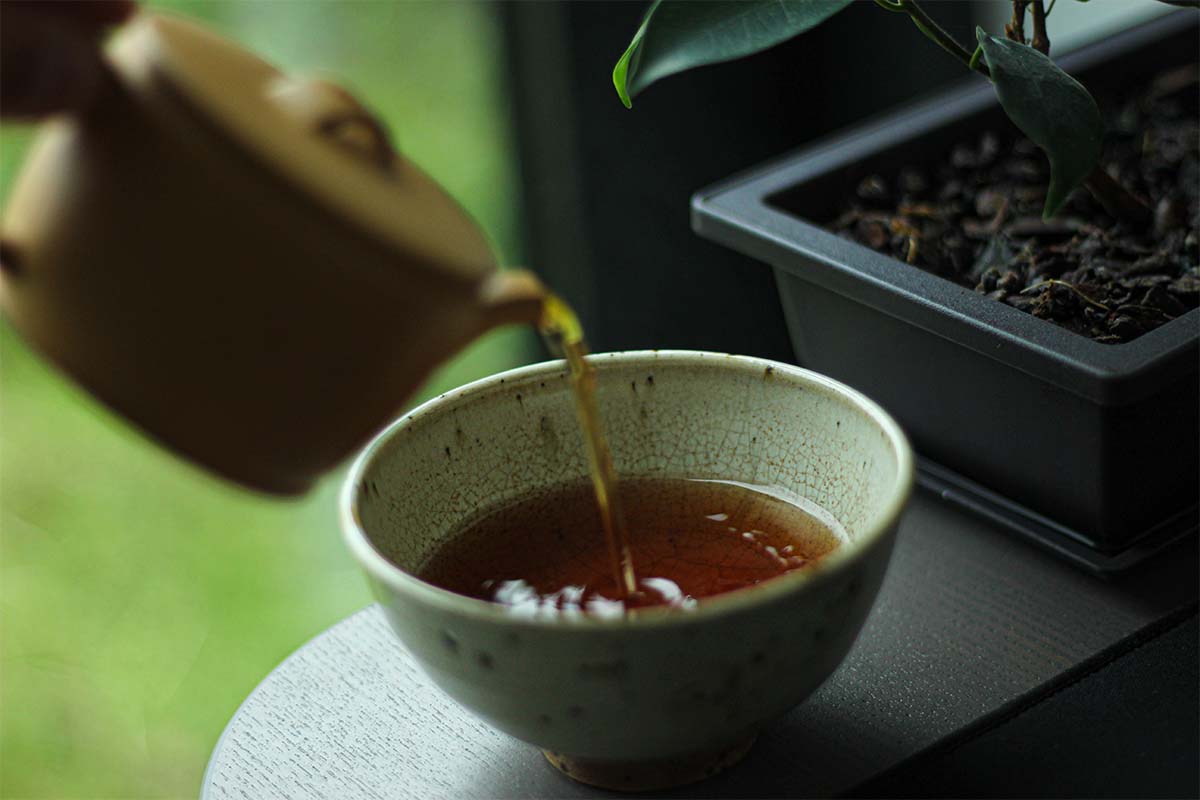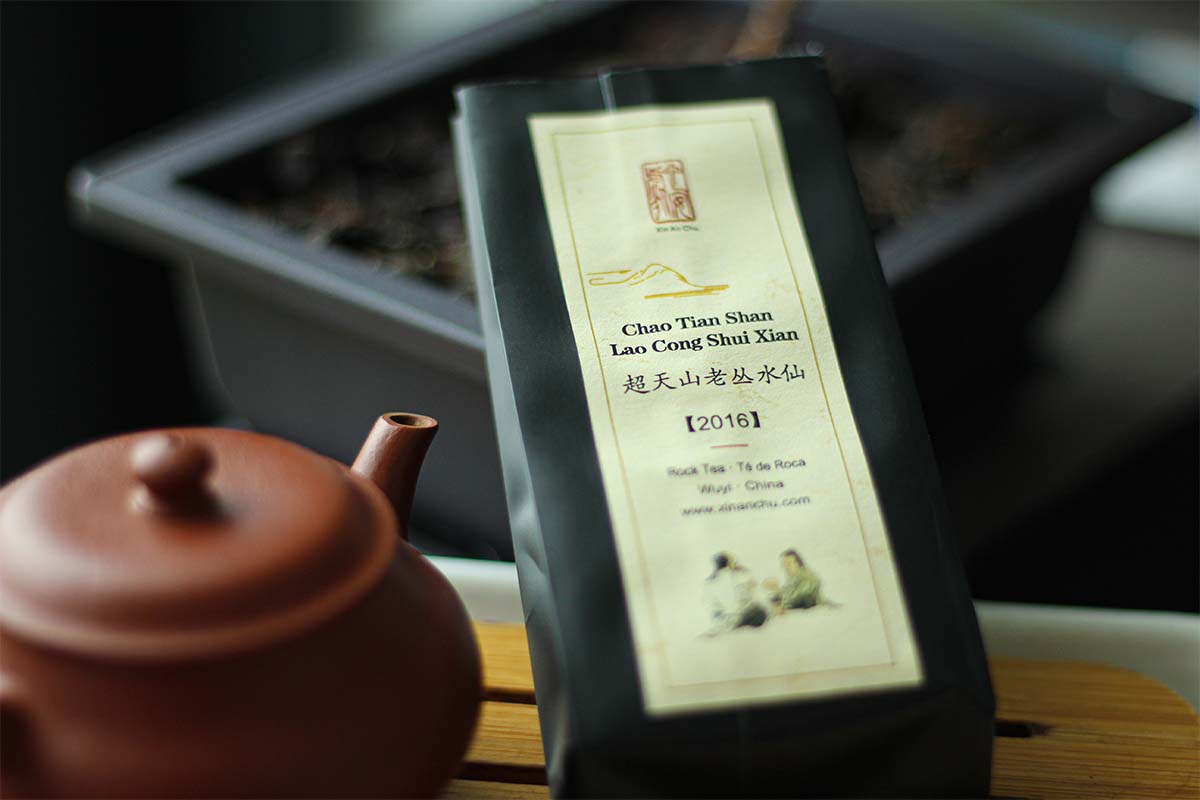This oolong tea was included in Curious Tea‘s February subscription box. If you want to read about other teas that were featured in the subscription, you can read this post.
Darjeeling Gopaldhara Maharaja
This is an oolong tea from Gopaldhara Tea Estate in Mirik Valley in the Himalayan foothills. This tea estate is one of the highest with elevations between 1.700 and 2.300m. The tea itself is second flush, which means that it was the second picking of the season. They chose to process this tea as an oolong tea, which makes it less oxidized than classic second flush Darjeeling teas. This brings out the more complex character of this tea. The dominant flavours are muscatel, honey and fruity notes. Muscatel is something quite special as it comes from insects that attack the tea plants during the second flush period. A kind of green flies nibble on the buds and top leaves of the tea plants, which causes a reaction in the plants. The plants want to protect their leaves and buds so they release all kinds of substances which enhance the flavour. This flavour is called ‘muscatel’. The tea is supposed to have a complex flavour of honey, muscatel, fruits and even a light minerality.
The dry leaves are a mixture of black, brown and brighter leaves that are not that big. It’s just small mixed leaves.
If one looks at the wet leaves, he/she can clearly see that the leaves are a different shade of brown now.
Tea Tasting
- Water 90 °C
- 5g of leaves for a 100ml Chaozhou teapot
- 1 rinse
- 6 steeps (15 sec + 5 sec each steep)
Smell dry leaves
The dry leaves have a very complex smell. A lot of different flavours mixed together. I’m getting citrus notes in combination with light honey. Even some fruity notes.
Smell wet leaves
The wet leaves have a different smell. It’s honey and muscatel in combination with citrus notes. It has a sharp and warm smell at the same time. It’s weird because there is perfect harmony.
Steeping
1st steep: my initial thought was: “Am I drinking a black tea?” It has some minerality to it with some light notes of citrus. It’s not really the aftertaste that is citrus but it’s more the finish. Once I swallow the tea, I’m not getting an aftertaste.
2nd steep: smooth steep. Very light minerality but mainly citrus. The aftertaste is more citrus.
3rd steep: minerality is stronger now. The citrus is very light at the beginning but becomes more prominent towards the end. Citrus aftertaste and a chalky mouthfeel after swallowing.
4th steep: mineral undertone but mainly citrus. I’m also getting some subtle fruity notes. The finish is mineral, as is the aftertaste. The aftertaste is subtle and a bit astringent as well.
5th steep: the minerality and citrus are less intense now and I’m starting to get more fruity notes. No real aftertaste and a chalky mouthfeel. This is a pleasant steep.
6th steep: light notes of citrus and some pleasant fruity notes. No real aftertaste. Still enjoyable to drink.
Conclusion
This tea is decent but not really my cup of tea. For me, it resembles black tea a bit too much and I’m not a fan of black tea. The flavours were pleasant to drink but sometimes a bit too intense, especially the citrus. The fruity notes during the later steeps saved the tea for me. These notes added some complexity to the tea. I was amazed by the complexity of the smell. The combination of sharp, fresh notes and warmer elements had my attention. Based on the smell of the leaves, this tea did not meet my expectations. It’s still decent and complex but not for me.




